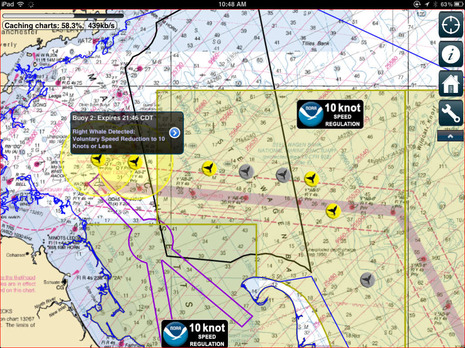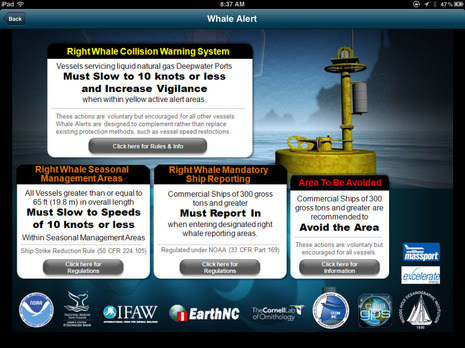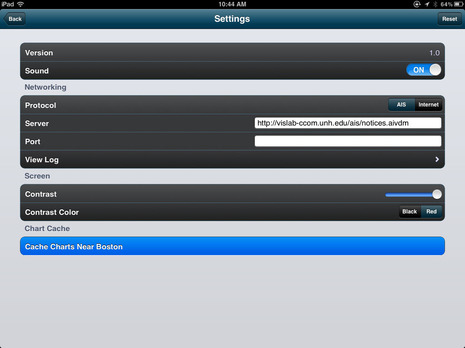Whale Alert, an app with a mission

It's an unusual app that gets a press conference and main stream media attention, and Whale Alert certainly deserves it. It's not just that this app might actually save the lives of some rare right whales -- which would be wonderful -- but it also demonstrates how mobile devices can be a critical integration tool between mariners and various governmental and nonprofit agencies, and between even a big ship's conservative electronics and the dynamic world of app development...
I'm in New Orleans now -- hence the CDT time stamp on the screen above -- and so I don't need to know that right whales have been detected within five miles of several Boston shipping channel acoustic buoys today, but I like knowing it. And I especially like knowing that ships and boats in that area now have a screen that can alert them to be especially careful about following the mandatory and voluntary speed restrictions, because these mighty mammals -- hopefully accompanied by nursing calfs -- apparently don't always know to get out of the way of a fast moving hull. And note that the seasonal danger areas extend all the way to Florida, and you can learn all about them from this app...

Whale Alert is available free for iPhones and iPads now, and I suspect an Android version will be along soon. That's because the app was created by EarthNC, which already supports both platforms with its charting apps. EarthNC is a good place to learn more about how Whale Alert came to be and how it works, but don't miss the NOAA Whale Alert site for more, including the manual which explains how it can connect to a ship's AIS. Yes, a special AIS message is being used to get the warning info direct to vessels and also to the Internet (via cellular perhaps?).
Do you suppose the whales are concerned about their privacy? I joke but isn't it interesting to imagine other ways important information can be distributed to boaters like this?


 Share
Share
Note that Whale Alert can work with iThing GPS to notify you when your boat enters a right whale management zone.